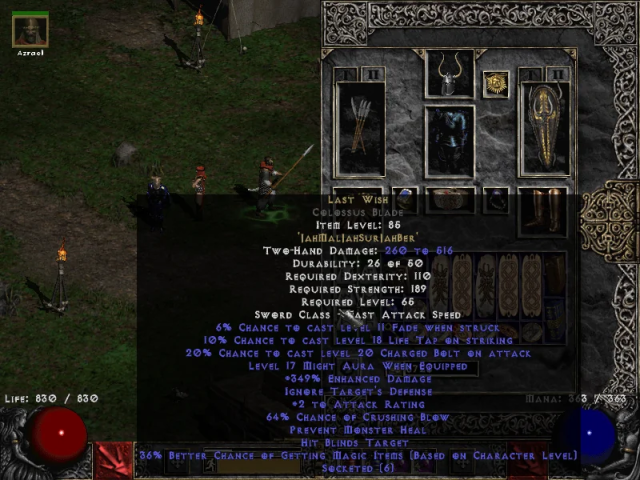Blizzard
Longtime fans of Diablo II are deeply familiar with the extreme timesink that is the late-game grind for the very best loot. But when the creators of Diablo IV tried to re-create that style of grinding for the latest game in the series, they found that their players’ tastes had changed quite a bit in the intervening years.
In a wide-ranging interview with Windows Central, Blizzard’s general manager of Diablo, Rod Fergusson, said that they launched Diablo IV under “the assumption that D4 was meant to be more D2-like.” That meant, in part, increasing the length of time required to discover the game’s most valuable items after post-Auction-House Diablo 3 made rare item drops much more common.
“One of the assumptions was that people were going to be okay with the long grind for the Unique or an Uber Unique in particular, because in Diablo II, it can go years,” Fergusson said. “You can go three years before you find the Uber you’re looking for… and so we were like, okay, this is what people love about the progression of D2, that idea of that very long chase.”
Once the game launched, though, Fergusson said the development team was surprised to find players complaining of how long it took to get some items—our own review expressed concern about the “‘loot treadmill’ approach to the endgame” and “loot drops [that] seem tuned a bit low for my taste.”
“We found out very quickly that if you don’t give me my Uber in my [months-long] season, then I’m upset,” Fergusson said. “And so we’re like, oh, wow, okay.”
Changing with the players
To help calm those upset players, subsequent Diablo IV updates have made it easier to earn Resplendent Sparks, which those players can use to craft high-end Uber Unique items they’ve been unable to find from random item drops. Having that option to skip the randomized item search helped satisfy the desires of modern players, Fergusson said.
“It’s just a kind of recognition of how much players have changed in 20 years,” he said. “You know… that consumptive nature of a live service and that time is money and I don’t have much time, so let’s go, right? And so that idea of like, oh, you’re going to get a unique every six months.”

Enlarge / Ah, the old-fashioned joy of finding an item with a wall of ability text.
That recognition of “how much players have changed” reflects how much the mere passage of time has changed the Diablo audience over the years. A 16-year-old who was sinking all their free time into Diablo II when it launched in 2000 is pushing 40 these days. That means the core, nostalgic audience for the series is now very likely to have a career, family, and/or other responsibilities eating into their playtime. There’s nothing like a few decades of aging to make the prospect of sinking hundreds of hours into a loot grind seem less appealing.
With Diablo III, Blizzard initially assumed that players with more money than time would simply bid up the game’s best items in the game’s real-money auction house, where players who had more time to grind would benefit from selling their rarest random finds. Instead, Blizzard soon acknowledged that the auction system “short-circuited [the] core reward loop” of the game, making it trivial to buy high-level loot that quickly made the entire late-game feel kind of irrelevant.
With Diablo IV, Blizzard seems to have struck a better balance for players who simply want a more reliable reward for any time investment they can make. With Resplendent Sparks, players willing to put in the in-game work can be confident that they’ll eventually get the top-level items they’re seeking. That consistency can be much more appealing for time-limited players than simply crossing your fingers for a low-odds virtual dice roll or opening your wallet to skip the gameplay grind process entirely.
The evolution of Diablo‘s item progression system is an important reminder of how the relative value of a player’s time can change as those players move between different stages of life. Who knows, maybe in 25 years Diablo VI will find success with ultra-rare item drops that soak up all the free time for a core audience of retirement-age players with nothing better to do than spend 500 hours grinding for a digital sword.